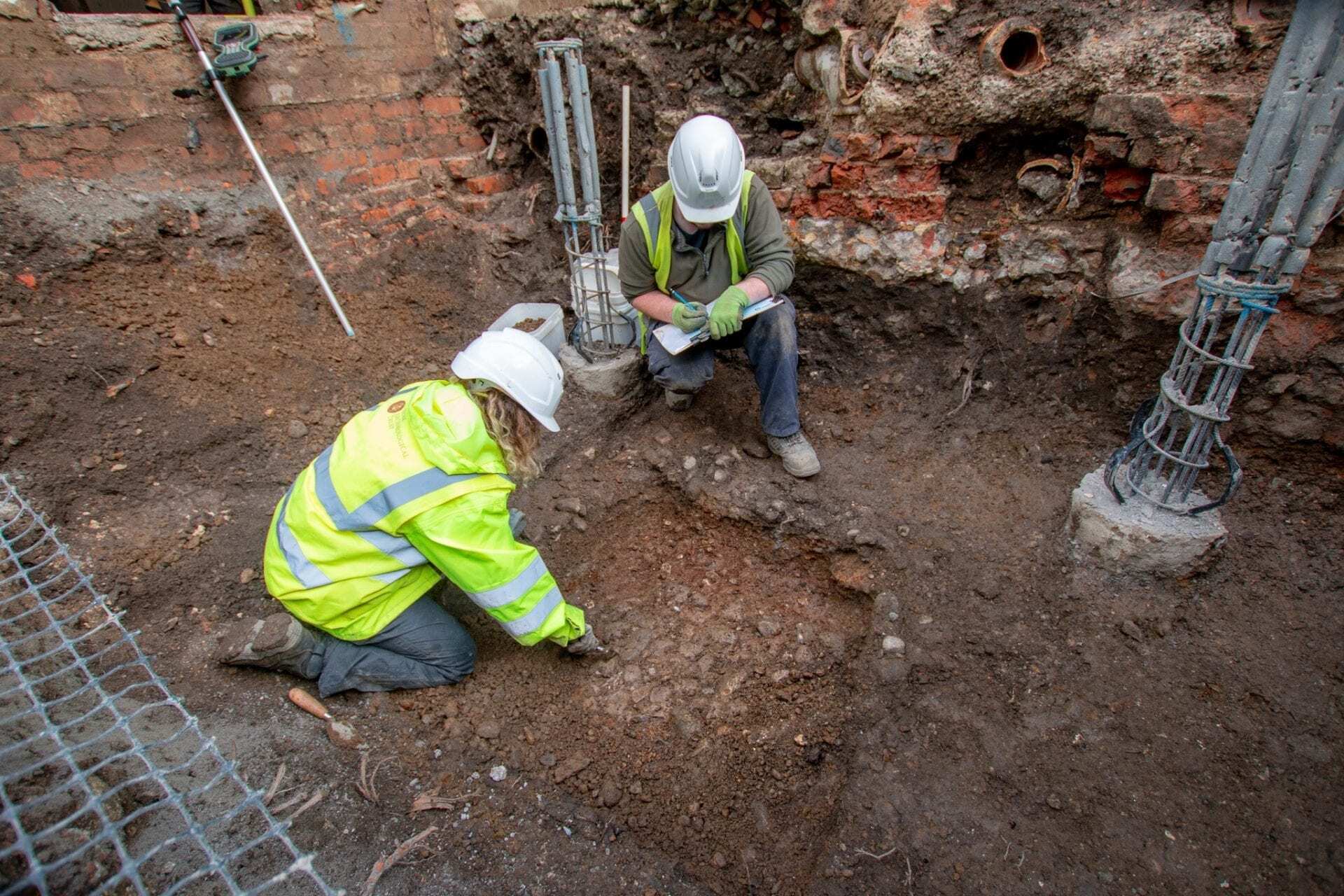Over the last six months, York Archaeological Trust (YAT) has been working on behalf of City of York Council, to monitor and record any archaeological deposits or features that are exposed through the ongoing redevelopment and restoration work at the Guildhall complex by VINCI Construction UK.
While much of the site has, in the past, been extensively disturbed by modern drains and foundations, some significant discoveries have been made. In the South Range area of the development, the excavation of new foundation trenches recently revealed an area of cobbled surface dated to the Roman period. Buried over 1.5m below modern street level, the surface contained an abundance of Roman pottery and a silver coin. Furthermore, the excavation of a small trench revealed that three distinct surfaces had been laid, suggesting that it remained in use for a considerable period.

The relatively rough construction of the surface may suggest that it represents a yard or lane rather than a main road, however, its location is significant. The surface is situated close to both the projected location of the Roman crossing point over the River Ouse and the junction of Roman road 2 (broadly followed by modern Coney Street) and the Via Praetoria; the road leading into the Porta Praetoria gatehouse and under modern Stonegate to the centre of the Fortress.
YAT Project Supervisor, Thomas Coates says, “While there is only so much that can be ascertained from a small trench, this discovery nonetheless offers a rare glimpse of the main approach to the Fortress from the South. We would like to thank City of York Council and VINCI Construction UK for their assistance with this fascinating project.”
Cllr Nigel Ayre, Executive Member for Finance and Performance, City of York Council said;
“The Guildhall site has a rich history due to the central role it has played over the centuries in York’s business, civic and social life. We’re delighted to see that as we restore and redevelop this collection of buildings, to secure its future in our 21st century city, that we have the opportunity to unpack more of its history thanks to the expertise of York Archaeological Trust.
“As the city evolves and pioneers to address modern challenges and seize new opportunities, it is vital that we protect its unique heritage and share the stories we uncover along the way.
“The restoration of the Guildhall will open up these fascinating building, for the public to see and enjoy, more than ever before.”
Work at the Guildhall redevelopment remains ongoing and there may yet be more discoveries but, in the meantime, YAT specialists will begin the process of analysing the finds and environmental samples recovered so far. In addition, the findings of the 2019-20 works will be compared to those of previous investigations in the nearby area to see how they may add to our understanding of the origins and development of Eboracum.
Header Image – Archaeologists from York Archaeological Trust unearthing the Roman surface at the Guildhall site. – Credit: YAT





